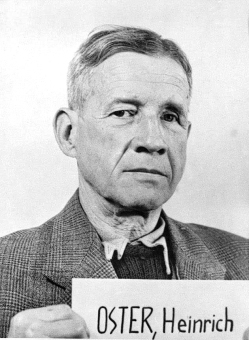Heinrich Oster (1878–1954)

© National Archives, Washington, DC
Heinrich Oster was born in Strasbourg on May 9, 1878, the son of Oberstleutnant Heinrich Oster. After attending school in Speyer, he served in the military as a one-year volunteer in 1898, and then studied chemistry at the Berlin-Charlottenburg Technical Academy and the Friedrich Wilhelm University in Berlin. Heinrich Oster graduated in 1903. Two years later, he was awarded a doctoral degree for his dissertation on indophenols. Immediately thereafter, he was offered a job at Agfa in Berlin and worked there until 1914. He fought in World War I, was wounded after only a few weeks, and lost his left eye; after that he worked on the staff of the Commander of the German Troops in Alsace. In 1917, Oster was detailed to BASF as War Office Commissioner of the Arms and Ammunition Procurement Office, and one year later he was dispatched to Leuna.
In 1918, Oster was hired by BASF as deputy director. In 1921, he became a member of the managing board of BASF, and in 1926, an alternate member of the I.G. Farben managing board. There he was a member of the managing board’s Working Committee, the managing director of the Nitrogen Syndicate, and a member of the Subcommittee for Fertilizers and Explosives. Finally, in 1931, Heinrich Oster was named a full member of the managing board. Between 1935 and 1939, he was a sponsoring member of the SS. In 1937, he became a member of the Commercial Committee. In 1939, he was awarded the War Merit Cross 1st Class, and the following year he joined the NSDAP.
In 1946, he was arrested by the U.S. military government. In the I.G. Farben Trial at Nuremberg, he was sentenced in 1948 to two years of imprisonment for “plunder and spoliation.”
(SP; transl. KL)
















